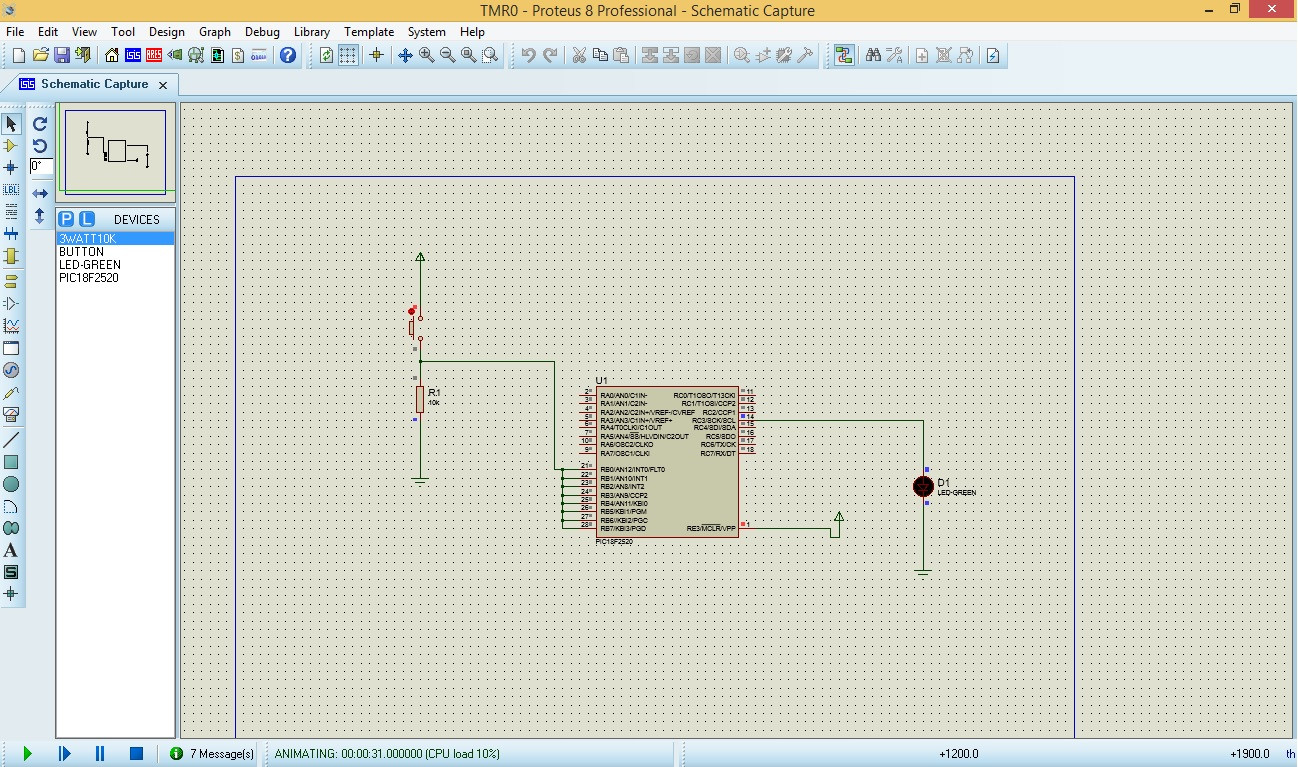SOLVED: I changed the infrared receiver and all went correctly, I am using the TSOP4838.
EDIT:I have modified the code, I have been testing the program more deeply and I have found something weird. I am using an infrared code receptor like this:

When the PORTB is linked to GND the microcontroller starts sending every second the message "while", but when I link it to the VOUT the microcontroller stops sending it( when shouldn't stop) and blink the led when i push some button on the infrared remote control. I really have no idea about what is happening here, i hope someone can help me with this.
I am making a program to read a code from some remote infrared transmiter. I have tested it in Proteus and it seems work, but it doesn't physically. Using my microcontroller (PIC18F2520) seems to don't enter to the interruption.
I show you the code below:
#include <xc.h>
#define _XTAL_FREQ 4433619
char infrared_code[6];
unsigned char UART1Config = 0, baud;
char MensajeTx[] = "Probando ";
int counter = 0;
void main(void) {
//Infrared entry.
TRISBbits.RB0 = 1;
TRISBbits.RB1 = 1;
TRISBbits.RB2 = 1;
TRISBbits.RB3 = 1;
TRISBbits.RB4 = 1;
TRISBbits.RB5 = 1;
TRISBbits.RB6 = 1;
TRISBbits.RB7 = 1;
//State LED
TRISCbits.RC2 = 0;
UART1Config = USART_TX_INT_OFF & USART_RX_INT_OFF & USART_ASYNCH_MODE & USART_EIGHT_BIT & USART_BRGH_HIGH;
baud = 28;
OpenUSART(UART1Config,baud);
ADCON1 |= 0b1111;
EnablePullups();
RCIF = 0; //reset RX pin flag
RCIE = 1; //Enable RX interrupt
IPEN = 0;
INTCONbits.RBIE = 1; //Enable Interrupt per change on PORTB
INTCONbits.PEIE = 1; // Enable Peripherial Interrupt
INTCONbits.GIE = 1; // Enable Global Interrupt
INTEDG0 = 1;
ei(); //remember the master switch for interrupt?
while(1){
for(int i=0; i<10; i++)
__delay_ms(100);
putsUSART("While: /n");
}
}
void interrupt low_priority myIsr(void){
//If is interrupted by change on portB
if (INTCONbits.RBIF){
__delay_ms(14);
__delay_us(224);
for(int i=0;i<6;i++)
{
if(PORTBbits.RB0)
{
infrared_code[i] = 1;
}
else{
infrared_code[i] = 0;
}
__delay_ms(1);
__delay_us(778);
}
while(BusyUSART());
putsUSART("Interrupcion: ");
//for(int i=0;i<6;i++)
//{
//WriteUSART(infrared_code[i]);
// putsUSART(infrared_code[i]);
// }
putsUSART(infrared_code);
putsUSART("/n");
if(counter == 0)
{
PORTCbits.RC2 = 1;
counter = 1;
}
else if(counter == 1)
{
PORTCbits.RC2 = 0;
counter = 0;
}
INTCONbits.GIE = 1;
INTCONbits.RBIF = 0;
if (PORTB) {
asm("nop");
}
for(int i=0;i<20;i++)
__delay_ms(100);
}
}
I'm really working on it, but I don't find the cause, I would appreciate if you could help me with it.
By the way, when I have tested it on Proteus, don't know why, but to be able to read some change in PORTB0 I have to connect them all (from PORTB0 to PORTB7) even when I have just specified PORTB0 as digital input.

Greetings!.

isrto a specific interrupt vector? Or it is just single vector for any interrupt? \$\endgroup\$